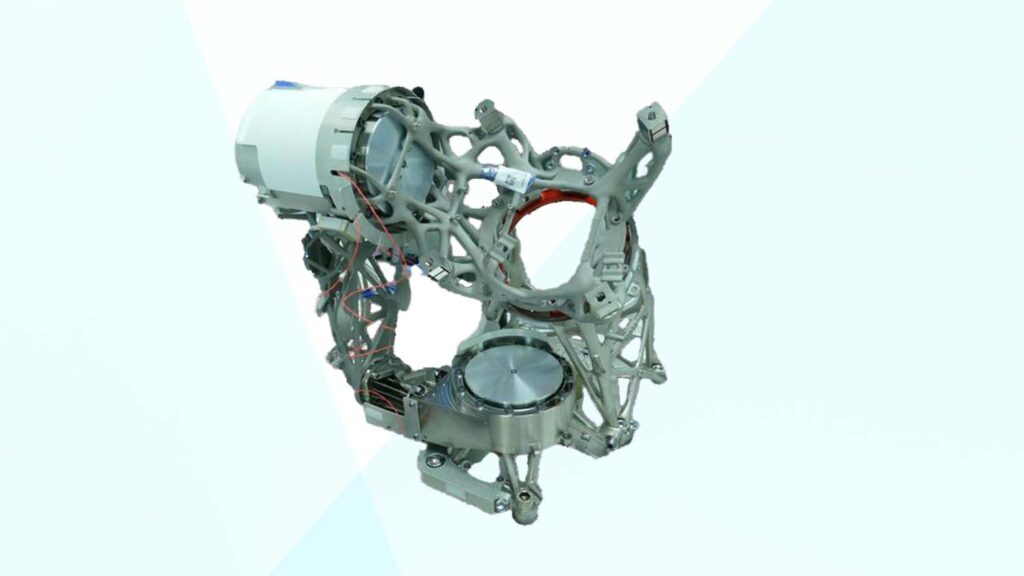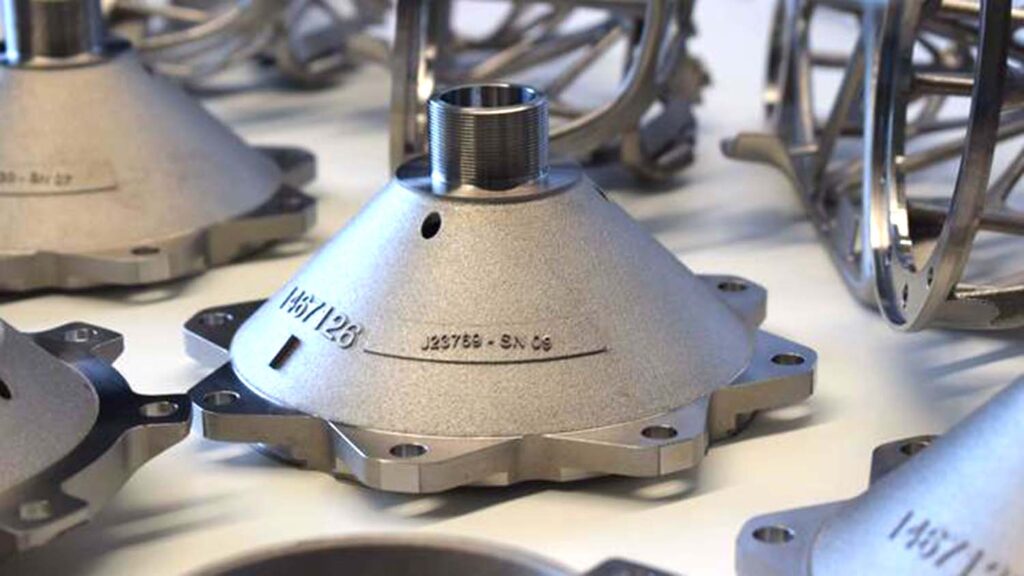Thales Alenia Space has described the process behind a mission critical sub-system on its Spacebus NEO satellite, the Electrical THruster Mechanism (ETHM), which points the satellite propulsion to correctly position it in space.
Comprising of 7 brackets, four ETHMs are required per satellite, forming the chassis around the engines, performing as two axis gimbals holding the electrical propulsion unit, and enabling it to vector with smooth and steady movements.
Thales Alenia Space and 3D Systems have collaborated to put over 1,700 flightworthy parts in orbit as of 2021, and for the ETHM project, Thales Alenia Space once again partnered with the additive manufacturing experts’ Application Innovation Group (AIG) to combine several functions within a small design space while guaranteeing accurate dynamics.
The total dynamic volume allotted for the ETHM is 480 x 480 x 380mm, and includes rotary actuators, harness, tubing, and a holding mechanism.
3D Systems provided manufacturability and design feedback to help Thales Alenia Space achieve its performance objectives, optimising the strength-to-weight ratio while making adjustments for areas of heat concentration, helping to protect functional components from thermal damage.
By using 3D printing to manufacture the system, Thales Alenia Space triggered an expansion of positive impacts: light-weighting improved thrust efficiency beyond what conventional manufacturing would allow, which in turn improved fuel efficiency, resulting in lower costs and new opportunities for technical innovation elsewhere.
“Every feature is more or less conventional, but putting them together in a single compact and competitive mechanism is really a challenge,” said ETHM product manager Gilles Lubrano.
Parts were built using 3D Systems’ DMP Flex 350 metal 3D printers in LaserForm Ti6Al4V grade 23 titanium material, with 3D Systems’ experience working with titanium helping balance the complexity and strength of the parts, as well as reducing the number of iterations needed through tools like 3D Systems’ 3DXpert simulation module
Achieving the acute accuracy needed was an extra challenge, needing a full manufacturing workflow comprising of post-processes CNC-finishing and tomography inspection to guarantee product and process repeatability in an AS9100 controlled environment.
3D Systems application engineers helped provided guidance on the level and sequencing of quality controls for risk mitigation to help Thales Alenia Space ensure a thorough, quality-oriented, and cost-efficient manufacturing flow – achieving the 0.1-degree pointing accuracy required in which some parts have as many as 249 measurement points taken via CMM that must be in spec.
Prior to transitioning production to Thales’ production facility in Morocco, 3D Systems helped organise and coordinate a best-in-class supply chain to fulfil series production and produced more than 70 parts at its Customer Innovation Center in Belgium, which is part of 3D Systems’ AIG.








